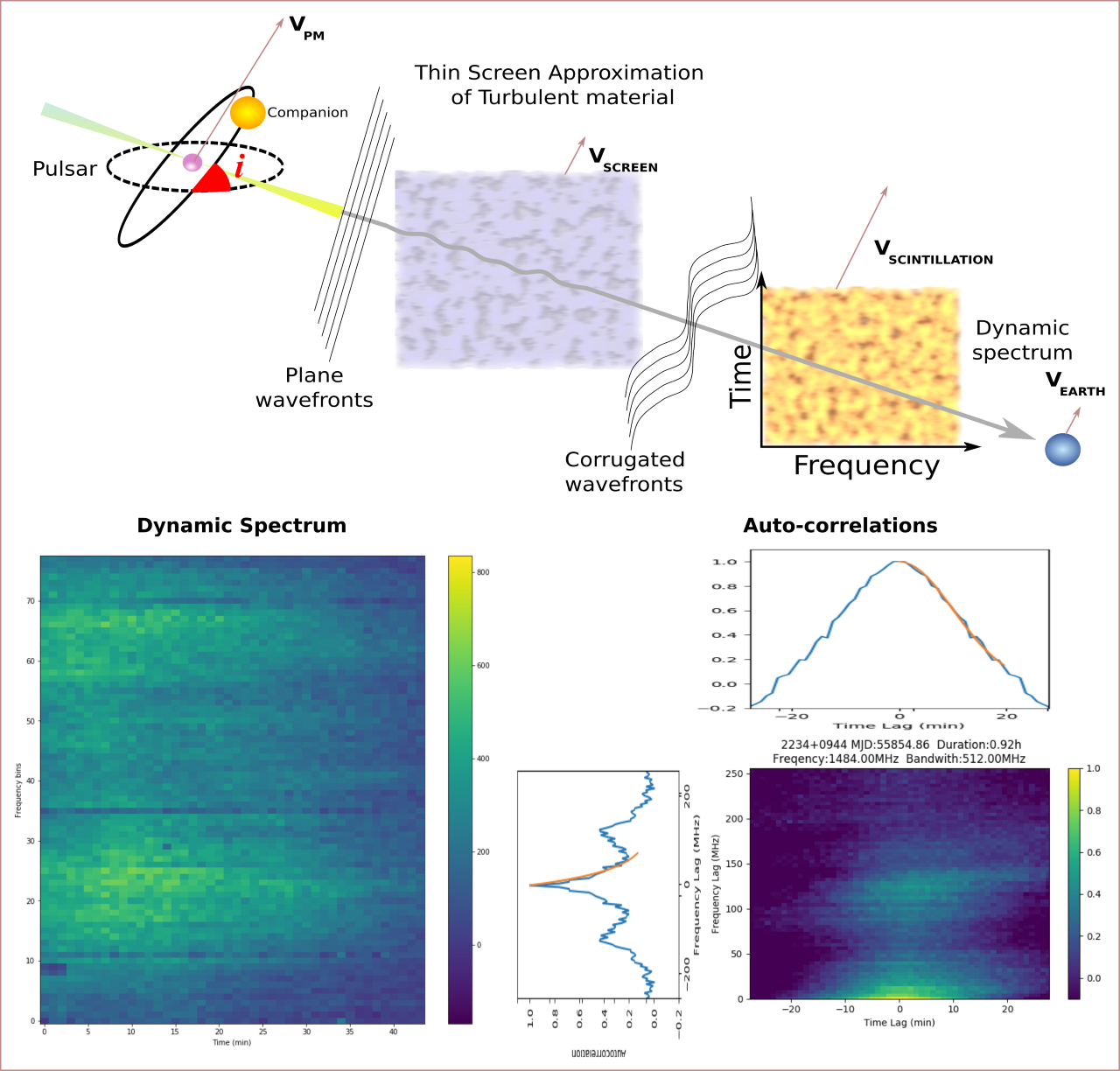Daily Image
21-08-2019Constraining Inclinations of Black Widow Pulsars
| Submitter: | Caroline El Khoury |
| Description: | Pulsar signals are affected by the presence of turbulent magneto-ionic material along the line of sight as they travel from the pulsar to the Earth. This means the ‘pulsar’ signal is travelling through a medium with variable, non-zero refractive indices, and hence the photons with higher energy arrive before the photons with lower energy and the radio wave is thus dispersed. Since this medium is turbulent, this creates a diffractive pattern visible in dynamic spectra of pulsar observations, much like the ripples one would observe on the surface of a pool or lake due to incident sunlight or bright waterfront lamps. Analysing scintillation spectra of pulsars can help study the varying column densities of electrons along the line of sight. We use pulsar observations at 1400 MHz, obtained from the Nancay telescope and analyze dynamic spectra from selected Black Widow pulsars to test some of the theoretical assumptions traditionally used to determine these parameters and the requirements on the data, for a future follow up campaign. This image shows the process by which the plane wavefronts from the pulsar are scattered by the medium along the line of sight, to produce the scintillation pattern as shown in the dynamic spectrum on the bottom left. Using auto-correlation analysis, we determine the scintillation parameters called bandwidth and timescale. These are measurements of average variations of the bright spots i.e. scintles in the dynamic spectra. Once precisely measured, these parameters can then be used in the calculation of the inclination (i) of the binary system. By: Caroline El Khoury, Golam Shaifullah & Caterina Tiburzi |
| Copyright: | CC-by-SA |
| Tweet |  |
